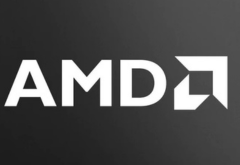As more applications are moving towards open source databases, skills, code quality remain key challenges. For small enterprises, open source databases offer lesser up front investments when coupled with on-demand database solutions.
Customers have made a great leap of faith on open source databases these days. With many open source applications coming to the fray based on Internet based applications like e-commerce, supply-demand and community portals. The main reason is that there is now a readymade pool of talent and service providers available largely and customers getting more and more comfortable.
MySQL remains the main open source Database. Most websites, blogs and portals and other applications built on open source rely on MySQL as the primary open source database, according to DB-Engines Ranking. Other open source databases making the mark in the top 10 are PostGre SQL, Mongo DB and Cassandra.
MySQL is a key element of the LAMP — Linux, Apache HTTP Server, MySQL, PHP — open-source web development stack. So people look for these comprehensive skills when it comes to administration as a whole. The most important aspect here is the availability of skill.
Ganesh Hariharan, CEO of Sysopminds, a fast upcoming open source platform – talent on demand service provider, says,”‘the biggest challenge in terms of database administration is around overall skills. Most IT service providers are failing to get the requisite talent in the industry, especially with both service management and database administration in general. There is a near panic on open source database administration talent shortage.”
Cynthia Jones, CEO of Zado Technologies, an IT talent recruitment firm seconds this opinion. “The challenge in industry is that even though there are training courses, ability to get experienced resources, which are in high demand, is the biggest challenge,” she adds.
Each of these top open source databases have their own applications, and hence have found their own space to grow. Mongo DB is already trending in the top of IT recruitment charts, after HTML5, says Cynthia. This is corroborated by Mango DB’s CEO Dwight Merriman.The reason is that each database also has now a server and application stack built along with it. Cynthia adds, on the challenges faced by the dearth of talent, “I think one reason of several to use MongoDB in an application stack is simply that engineers want to work with new things, not old things, and that makes hiring easier.”
The technology being an application stack helps a comprehensive development platform of applications where each area is focused by one community – in MongoDB’s case, the server and the application stack. Mongo DB says that the core database stack is focused by its own team for now. The usage of open source is demonstrated by the fact that the stack has been downloaded 8 million times, which is too fast for a community supported software.
The popularity is now unquestionable. Shrikant Garud, the CEO of Auisy Technologies, says that “Enterprises are now looking to cut down costs on database licenses by moving towards open source database platforms. The audits and compliance requirements enforced by software vendors like Microsoft and Oracle over the past few years has made life difficult for even larger enterprises. So, IT teams are working closely with system integrators like us to move certain applications into open source platforms.”
This changes the game, he says. The role of an open source database solution provider, and support partner is therefore becoming increasingly important not only for small businesses, but even for large enterprises. He talks about his experience in some of the recent projects in banking and manufacturing.
The role of the system integrator is not limited to managing databases. These are part of complex, mission-critical applications which have huge revenue impact if not in proper shape. Most long term players in open source therefore, Shrikant says, are playing consulting roles in terms of open source decisions to partners. Auisy, in particular, he says that has helped customer manage IT investments in commercial database licenses.
However, consulting on compliance is not the only service expected here. Ganesh says that the role of an open source database solution provider starts with application architecture planning. One of the clients he is advising has given him a full charter of mapping the entire application landscape and come with open source based solutions, architecture, benefits and migration plans. The end customer is now willing to listen to suggestions that brings foresight into capacity planning of database infrastructure.
The biggest challenge is here is a scientific approach. Ganesh and Shrikant suggest taking a step back in assessing the plan in order or priorities. A step by step approach is better, Shrikant says. Even though a big bang approach to migration is possible and manageable, the incremental approach is what makes a big difference.
Some customers are still not comfortable going for open source though. They believe that commercial databases are still a better option, for the simple reason that there is more organized support, which is required for mission critical applications. However, this situation is changing, Shrikant says.
These set of customers form about 30% according to a report in Silicon India. These customers have developed a detailed ecosystem and deep investments, including customization efforts on database and software – like Microsoft SQL, Oracle or Sybase. These customers will stay put in their core database investments for a long time to come, Shrikant says. The reason is simple – the ecosystem is mature, and the investments are already planned; and there is no reason for migration even in the long term. So, the market will continue to be divided between open source and commercial off-the-shelf databases.
Another challenge that is faced is the code quality of the database. Auisy specializes in delivering high code quality, especially on the apps-database. The scripting, largely used for customization, can bring down the performance of a database in no-time. This is a major area of focus when handling large installations – when factors like virtualization, mirroring and scalability are involved. This is one of the major reasons for large enterprises not willing to consider open source databases. The commercial-of-the-shelf gives a better ecosystem for customization he says. The support is structured and there is more accountability, says Shrikant.
Another sector is small and medium enterprises. With cloud being adopted big time, low cost applications include open source development and database platforms. Ganesh says the larger cloud players have now established platforms that can provision databases on the fly, and therefore help startups to bootstrap faster. Amazon web services is a classic example – Amazon RDS is a web service that allows setup and operate a relational database with ease. This allows open source databases to be hosted on a cloud architecture. Ganesh says that this is a development that will have a long term impact on open source database’ feature.
The future of open source databases is bright, Ganesh and Shrikant agree. ‘The most important factor here is that open source databases have gained acceptance in mission critical environments, and have been able to address issues on scalability and security’.
 Latest Technology News Today – Get Latest Information Technology Updates and Services Latest Technology News Today – Get Latest Information Technology Updates and Services
Latest Technology News Today – Get Latest Information Technology Updates and Services Latest Technology News Today – Get Latest Information Technology Updates and Services 









